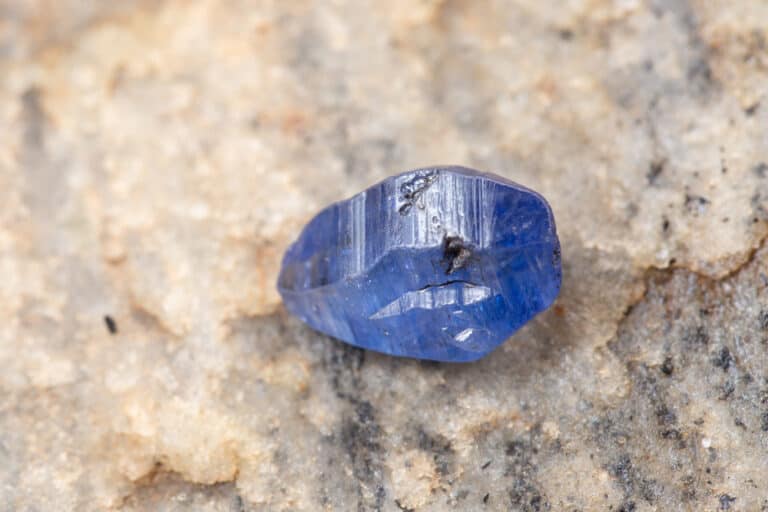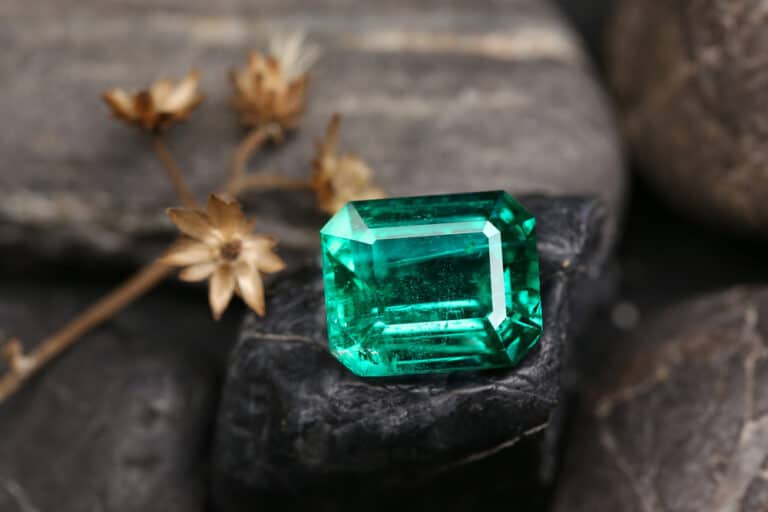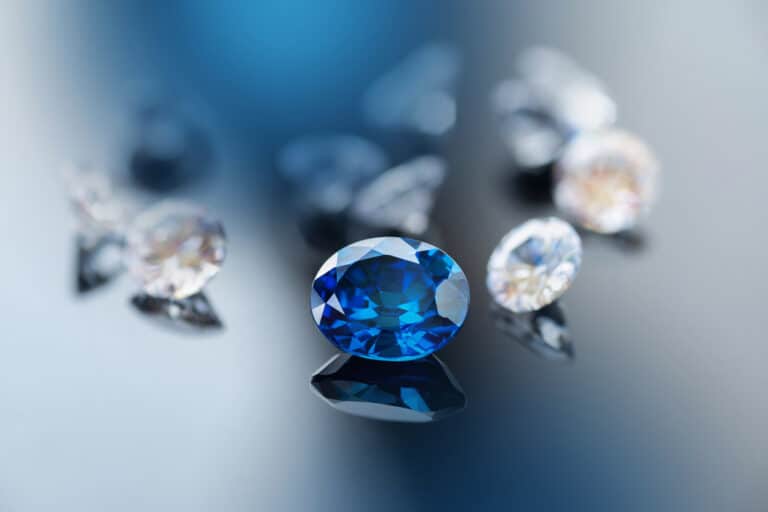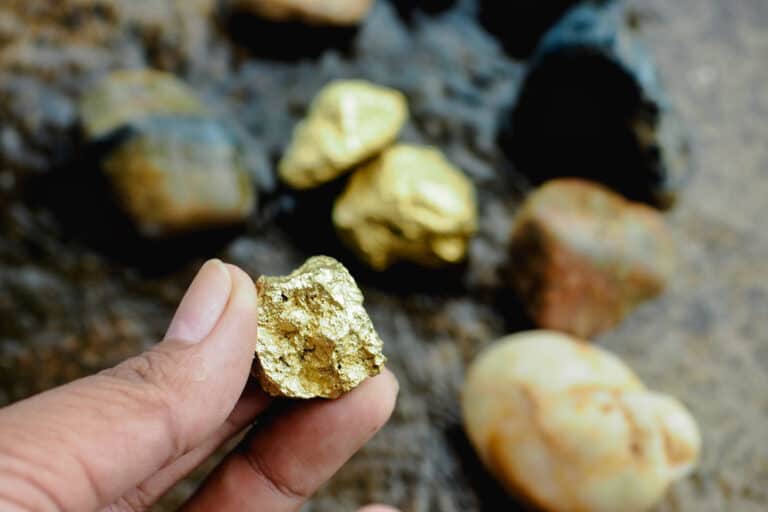If you’re considering buying a sapphire or emerald, you may find yourself having trouble deciding between the two. Both stones are beautiful and rare. So, which one would you choose? What are the differences between an emerald and a sapphire?
Emeralds mostly come in various green shades, ranging from light yellowish green to dark forest green. Sapphires also come in green, but their most common colors are blue and salmon. Sapphires are harder than emeralds. However, emeralds are rarer than sapphires and therefore more expensive.
While you cannot go wrong with either stone, we will help you decide which one to buy by comparing emeralds and sapphires. We will compare emeralds and sapphires in terms of scarcity, physical composition, strength, and price. This guide will help you decide which stone to buy and what you should know about these stones when buying them.
How Are Sapphires And Emeralds Different?
Emeralds and sapphires are two of the four precious stones, the others being diamonds and rubies. As such, you can imagine that emeralds and sapphires are pretty expensive. Therefore, you should carefully consider the properties of both before buying one.
While diamonds are known as the ultimate stone for an engagement ring, sapphires and emeralds are rarer than diamonds. So, what is the difference between emeralds and sapphires? Well, there are quite a few differences between these stones. So, let’s consider how emeralds and sapphires differ.
Sapphires Vs. Emeralds In Terms Of Scarcity
Sapphires and emeralds are rarer than diamonds, making them more valuable and often more expensive. However, among these two stones, emeralds are the most expensive. Emeralds are mostly found and mined in Columbia and Brazil. Here, you will often find smaller stones with more inclusions. Therefore, a large, clear emerald is extremely rare to find and exceptionally valuable.
Sapphires are also rare; the most valuable color is velvety blue or salmon. Blue sapphires are mined worldwide, mainly in Tanzania, Madagascar, and Sri Lanka. Sapphires also have some inclusions, meaning that a large, clear sapphire is worth more.
Sapphires Vs. Emeralds In Terms Of Physical Composition
Sapphires and emeralds are made from different materials. Sapphires are formed from aluminum and oxygen. Sapphires are extremely old and take years to form in the earth’s deeper layers. Trace elements, including iron and vanadium, create a blue color.
Emeralds mainly consist of Beryllium and require chromium, iron, oxygen, and vanadium to develop a deep green color. Emeralds are formed when Beryllium leaks from the earth’s core and relocates to the hydrothermal veins, where it hardens and becomes emeralds.
Sapphires Vs. Emeralds In Terms Of Strength
Sapphires and emeralds are strong gemstones perfect for everyday wear. Sapphires score a nine out of ten on the Mohs scale (the scale used to determine the strength of a gemstone). Emeralds score a seven and a half, making them slightly less durable than sapphires.
Diamonds score a ten on the Mohs scale, meaning that neither sapphires nor emeralds are quite as durable. However, these stones are still strong enough for everyday use, especially if they have fewer inclusions. We will discuss how inclusions affect strength later.
Sapphires Vs. Emeralds In Terms Of Price
Of course, price is a significant consideration when comparing emeralds and sapphires. When comparing the price of an emerald and a sapphire, you must consider the four C’s. These are color, cut, clarity, and carat weight. You can only discern which gemstone is more expensive if all four C’s are equal.
We will discuss the four C’s so you can see where sapphires and emeralds get their expensive price tags. Of course, color is the first and most crucial consideration for emeralds and sapphires. So, how does the color of sapphire or emerald influence its price?
1. Color
As mentioned, emeralds come in a variety of green hues. However, the most valuable emeralds have a dark green color. Therefore, consider the color’s vividness when looking for an emerald. Natural emeralds often have vivid green color and a little bit of shine. However, their color is more important than their brilliance.
Sapphires come in a variety of colors. However, as blue sapphires are the most precious and sought after, we will only consider this color. Blue sapphires range from light to royal blue; the latter is the most precious. Therefore, if you’re looking for a sapphire, look for a deep blue uniform-colored stone.
2. Clarity
Unlike diamonds, the clarity of sapphire and emerald doesn’t affect the price much. Natural sapphires and emeralds have some inclusions, such as cracks, air bubbles, and traces of other minerals. Therefore, clarity isn’t such a big consideration.
Sapphires naturally have fewer inclusions than emeralds. You often cannot see these inclusions with the naked eye. While clarity isn’t as important, a sapphire with fewer inclusions is more valuable than one with more inclusions.
Emeralds often have visible inclusions. While these inclusions make the gemstone more brittle, they also ensure that each emerald is truly unique. Therefore, when looking for an emerald, we suggest one with fewer visible inclusions. This ensures a stronger gemstone but will also be more expensive.
Sapphires and emeralds are often treated to make them stronger and hide some of the more visible inclusions. Treated gemstones aren’t as valuable as raw ones but are stronger and more durable.
3. Cut
Because sapphires and emeralds don’t have the same brilliance as diamonds, their cut doesn’t affect their overall beauty much. Emeralds are mainly found in round or emerald cuts, as these cuts help strengthen them and emphasize their deep green color.
Sapphires are found in many cuts, including round, oval, pear, and princess. The most famous sapphire engagement ring is a princess cut and belonged to Princess Diana. The cut of sapphires and emeralds doesn’t affect their price as much as their color and carat weight.
4. Carat Weight
The carat weight of a gemstone determines its size. Therefore, sapphire and emerald with a higher carat weight are bigger and more expensive. When comparing the carat weight of an emerald and sapphire, you must also consider their color, clarity, and cut. Raw, natural emeralds often cost more per carat than raw, natural sapphires because they are rarer.
A one-carat emerald may appear larger than a one-carat sapphire because it is less dense. The green color also makes it look bigger.
When buying an emerald or sapphire, you must consider all four C’s to determine which one is more affordable. While both stones have pros and cons, which one you choose ultimately comes down to which color you prefer. Both stones are beautiful and exceptionally valuable, meaning you cannot really make a wrong decision.

Conclusion
Emeralds and sapphires are precious stones. They are rare and valuable, meaning that they are also expensive. Emeralds are slightly rarer than sapphires and therefore slightly more expensive. Sapphires are stronger than emeralds and can be found in more shapes.
When comparing the price of an emerald and a sapphire, you must consider their color, clarity, cut, and carat weight. A high-quality emerald has a vivid green color, while a high-quality sapphire has a velvety blue hue.






